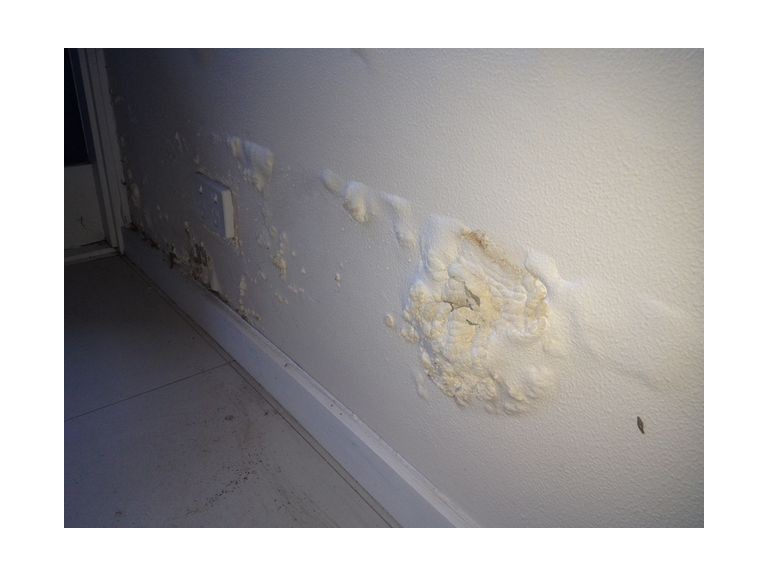
It occurs when water from the ground finds a way to rise up through the bricks and mortar of a building using a capillary action – this is where water is literally sucked up the wall via small tubes or holes that form in the building.
Rising damp can normally only travel so far up a wall, roughly 1.2metres high, as the strength of gravity overpowers the capillary action and prevents the water moving any higher.
You can often identify a rising damp problem by its ‘tide line’ of yellow or brown staining that moves slowly up a wall, internally or externally. You may also find that your skirting boards and floorboards are damp or rotting.
In some cases, you can also notice small fluffy white deposits on your plaster – this is actually salt that has been washed out of the bricks and onto your plaster.
The best way to prevent rising damp is the installation of a damp proof course which provides a waterproof layer within your walls that stops water being able to rise up your building.
If you are too late with this and your property is already suffering from rising damp, there are a number of different treatments available. However, before treatment can begin, the source of the problem should always be located and treated as a priority.
If you believe you may have a rising damp issue in your home, contact Prokil today for expert guidance and assistance in its removal 01273 258111.
My name is Simon Hetherton, I'm the branch manager for Prokil Brighton. Prokil Brighton offer a fast and reliable service. FREE inspections of your properties can be carried out to assess issues with Damp,...
The following Cookies are used on this Site. Users who allow all the Cookies will enjoy the best experience and all functionality on the Site will be available to you.
You can choose to disable any of the Cookies by un-ticking the box below but if you do so your experience with the Site is likely to be diminished.
In order to interact with this site.
To help us to measure how users interact with content and pages on the Site so we can make
things better.
To show content from Google Maps.
To show content from YouTube.
To show content from Vimeo.
To share content across multiple platforms.
To view and book events.
To show user avatars and twitter feeds.
To show content from TourMkr.
To interact with Facebook.
To show content from WalkInto.